Reader, I Baked It.
The New York Times ran a story about its famous 40 year-old plum torte recipe. I’ve been reading the Times for almost that long, but this was the first I’d heard of it. When they originally ran it, back in 1983, they had so many requests for copies that they reprinted it…and this led to an annual tradition of reprinting the recipe, with increasingly stern warnings to readers that they really ought to cut it out and save it next time, because they won’t keep reprinting it forever. (But whynot ? What’s the harm?)
Anyway, it’s a ridiculously simple recipe with very few ingredients and only four steps, the first of which is to pre-heat the oven, and the fourth of which is to put the torte in the oven. Even I could bake this.
And plums are at their peak right now. I live in Oregon, which is stone fruit country. Do not miss an opportunity to enjoy the plums when they are at their best. Or the peaches. Or the cherries. Really good fruit doesn’t just make you live longer, it makes you want to live longer, so you can eat more really good fruit.
This torte is delicious. It’s light and spongy and not too sweet and very, very plummy. It tastes like something people only make at home, something you couldn’t order in a restaurant or a bakery because it’s too homespun. This torte tastes like the kind of thing you’ve only ever eaten because someone you’re related to made it for you.
Also, it works with many other kinds of fruit. You can be damn sure I’ll be making a pear version, and an apple version, this fall. Some readers swap out some of the flour for cornmeal or almond flour, and I will too, next time.
Anyway, I was ridiculously pleased with myself for whipping this up. It turned out so perfectly that I immediately wanted to show the world what I’d done. Do all bakers do this? I don’t know, I’ve never been a baker. But I texted a picture to everyone I knew, and I painted its portrait for you:
I Told You That Story So I Could Tell You This One
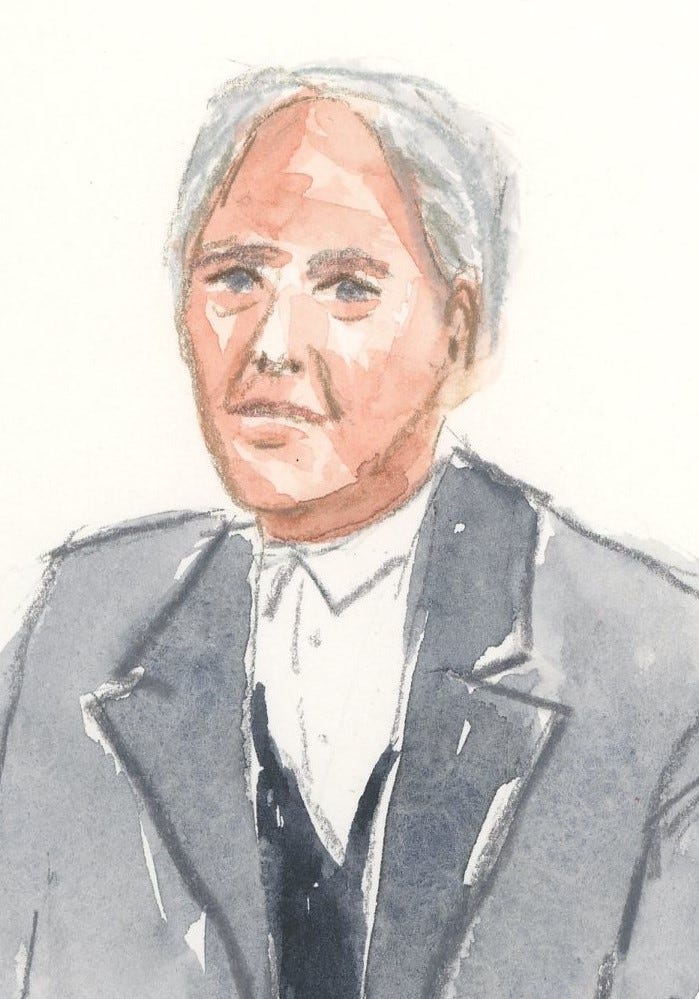
Almost every plum you’ve ever eaten owes its lineage to Luther Burbank, who lived in Northern California and introduced or bred an astonishing 800 or so plants. Shasta daisy? That’s his. Russet potato? Burbank did that. Freestone peaches? Yep.
And…pretty much all the plums. Imagine—we did not always have plums! I mean, Japanese people had them. Other people had them. But we did not, until the late 1880s, when Burbank started importing plum varieties from Japan and tinkering with them to make them easier to grow and sell commercially.
I know a little something about idiosyncratic plant breeders. In my book Flower Confidential, I wrote about Leslie Woodriff, the man who invented the Stargazer lily. He followed none of the rules of plant breeding. He didn’t keep notes or records of any kind. He crossed varieties that everyone said couldn’t be crossed. Sometimes he’d walk out into a field of lilies with a jar of pollen and just scatter it in the wind. This is not how plant breeding is supposed to work—but it did, and Woodriff created the most famous and successful lily that’s ever been bred.
Woodriff was obviously following the Luther Burbank method of plant-breeding chaos. Burbank’s records are maddeningly incomplete. So how exactly did he create over 100 varieties of plums and plumcots?
Genetic analysis will help us figure this out—eventually. The science is not there yet. But I’m completely fascinated by the work that botanist Rachel Spaeth is doing to decode his secrets. It turns out that in the few notes that Burbank did take, he made PLUM PRINTS. That’s right, he squished a piece of fruit on paper! And now Spaeth is trying to lift DNA from the paper to analyze his original specimens! WHAAAAT????
Before you get too excited—in a recent talk Rachel gave (I’ve cued up the video to the point where she’s talking about it if you want to listen) she explained that this turns out to be not so easy. She tried it first on her own test plum prints, so as not to damage Burbank’s original papers unnecessarily. While she was able to extract plum DNA from her own prints, she found that Burbank’s prints were simply too old, and the DNA too degraded, to yield any information readable by today’s technology.
I emailed Rachel and asked her if she could tell us anything else about her plum research. She very kindly wrote back, confirmed that current technology doesn’t let her extract DNA from Burbank’s plum prints, and added, “I will be joining the ARS [USDA’s Agricultural Research Service] to do a postdoc as the interim Curator of the Prunus collection in December, so there is a possibility I'll circle back around to it as the technology catches up with the history.”
That’s right—she’s doing a postdoc in PLUMS! Who knew that was even a possibility?
Anyway—I was nonetheless so excited about plum prints that I ran down to the kitchen to make my own.
The lower two on the left, the very faint ones you can hardly see, are the un-painted-on plum prints. Obviously they don’t make much of an impression. So I painted and drew on top of the rest of them with watercolor, a dip pen, and an acrylic ink from Liquitex called Muted Violet. And I dipped one half-plum into a puddle of watercolor and stamped it onto the paper (that’s the one on the bottom), but the result convinced me that this was simply a waste of a very good plum—and have I mentioned that plums are VERY GOOD.
While We’re On the Subject of Burbank and Plums, It Would Be a Shame Not to Mention Frida Kahlo…
…who painted a portrait of Luther Burbank in 1931, five years after his death. Although they never met, art historians speculate that she would’ve heard of him as she was living in San Francisco at the time. We know that she was very interested in plants and hybridization—and expressed a lot of ideas about the hybrid nature of her Mexican identity through her art. (Burbank was a eugenicist, and wrote many disturbing words about the advantages of “weeding out” undesirable characteristics in humans as he did with plants, but he also wrote that he saw great potential and opportunity in the mingling of races, like the hybridization of plants. From what I’ve read, it’s unclear whether Frida was aware of any of this.)
Also, we know that her husband included Burbank in a mural called “The Allegory of California”, which you can see today at the City Club of San Francisco. Do you see the grey-haired man bent over a plant, middle right? That’s Burbank.
But what’s most significant about Kahlo’s painting is that it is apparently her first foray into surrealism!
I mean, you look at it now and think, “well, of course that’s how Frida Kahlo would paint Luther Burbank.” But in 1931, Frida wasn’t quite Frida yet! She was only twenty-four years old! She didn’t know what a Frida Kahlo painting looked like. (Here’s a lovely exploration of her early work, prior to this) When she painted this, do you suppose she thought, “Ah-ha! Now I know what a Frida Kahlo painting looks like!”
Or did she think, “What the hell just happened?”
Or did she wish she’d included some plums?
In Other News, I Just Launched a New Art Class
A question I get asked a lot about travel sketching is: How do you make time to sketch when you’re traveling with other people?
One answer to that question is—draw thumbnails! Make a tiny, 2-inch drawing that takes only a minute or two, then move on. Color them later if you have to.
I did a lot of thumbnail sketches when I went to New Zealand in the spring, so this class is based on my New Zealand sketches. It’s live on two platforms right now:
Skillshare is a membership platform where you subscribe and take as many classes as you like. Here’s a link to the class on Skillshare.
You can also take the class on Udemy, where you only sign up for the classes you want to take. Check it out on Udemy right here.
And for those of you with paid subscriptions to this here newsletter—I’m going to make a bonus lesson for you, based around a day trip to Hobbiton! Coming soon.
Subscriber Bonus: Check Your In-Box
Last week I said that I’d put subscriber bonuses right here at the bottom of the newsletter. Turns out that’s possible to do, but it’s not ideal, for various boring reasons.
So—subscribers! You’re getting a separate email today. Look for it!
For everyone else—if you’re interested in supporting this little endeavor of mine and/or learning a little about art, I’m doing art tutorials for a bargain five bucks per month. This time it’s a little show-and-tell from a trip to the farmers market, where I drew with Inktense colored pencils. If you’re intrigued about these art lessons, here’s a free preview of the kind of stuff I’m doing.
The Bit at the End
Come find me on Instagram.
And sometimes I post paintings for sale! Like these! Right here
Order signed copies of some of my books from my husband’s bookstore, or order all my books and many others at Bookshop.org, which supports independent bookstores
Take one of my online writing or art classes here.
Please post a comment, ask a question, and share this with friends! I love hearing from you all!




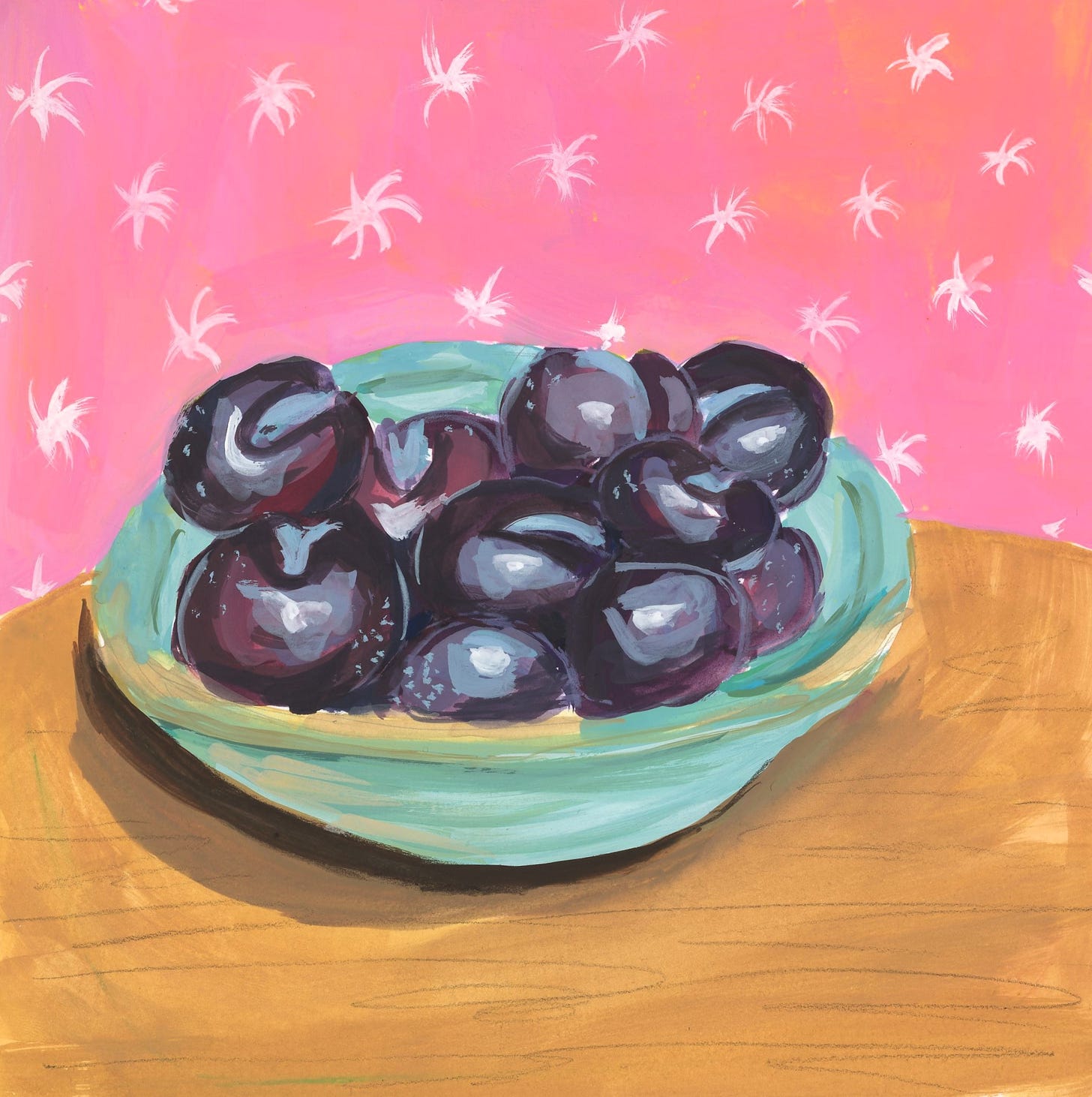
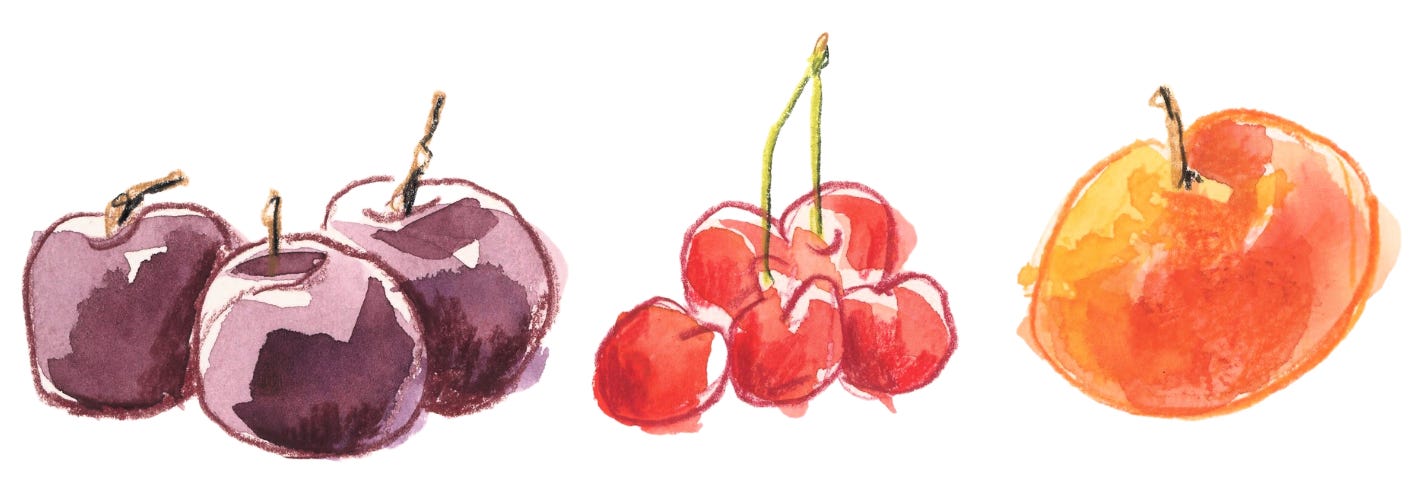
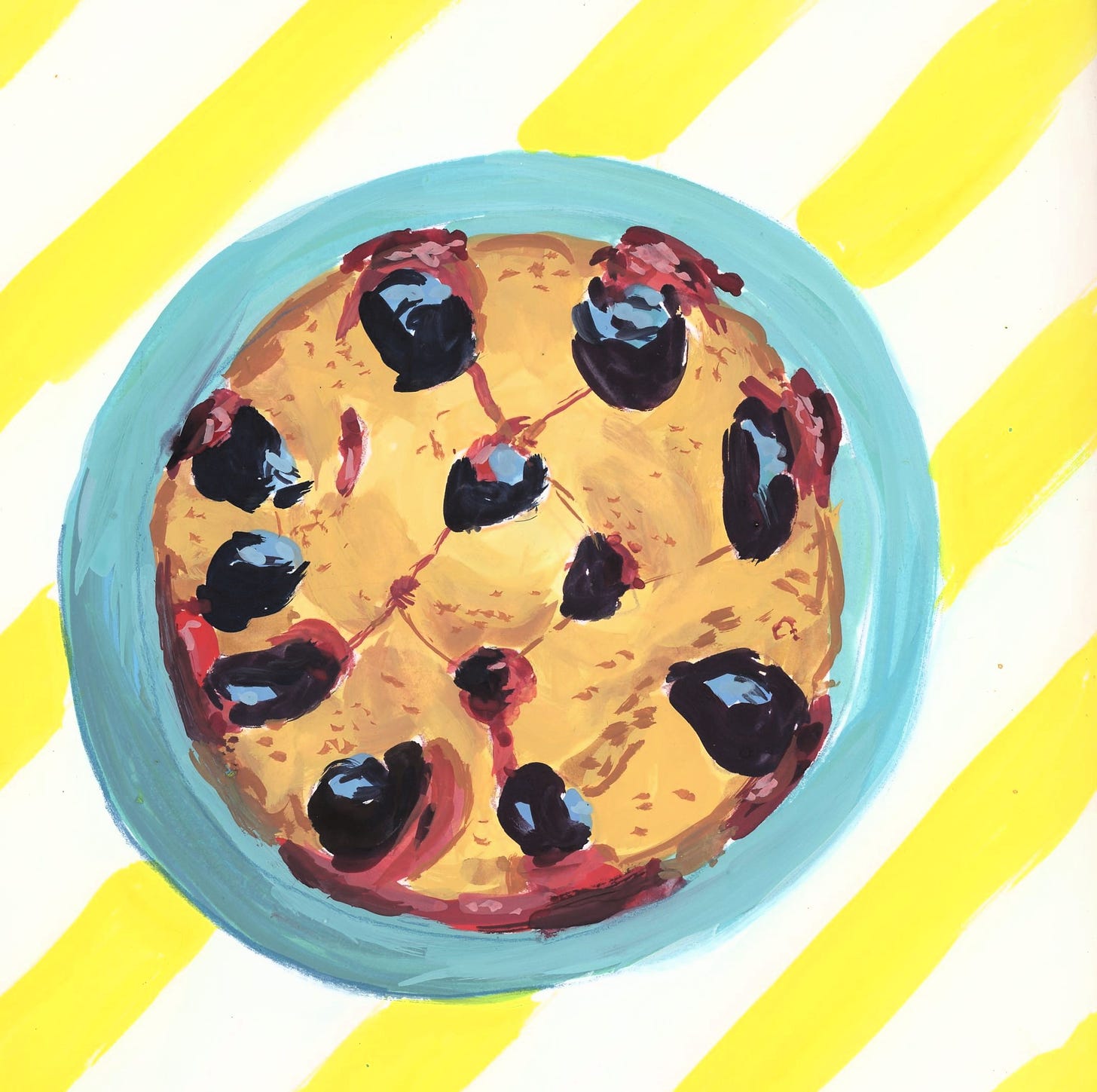
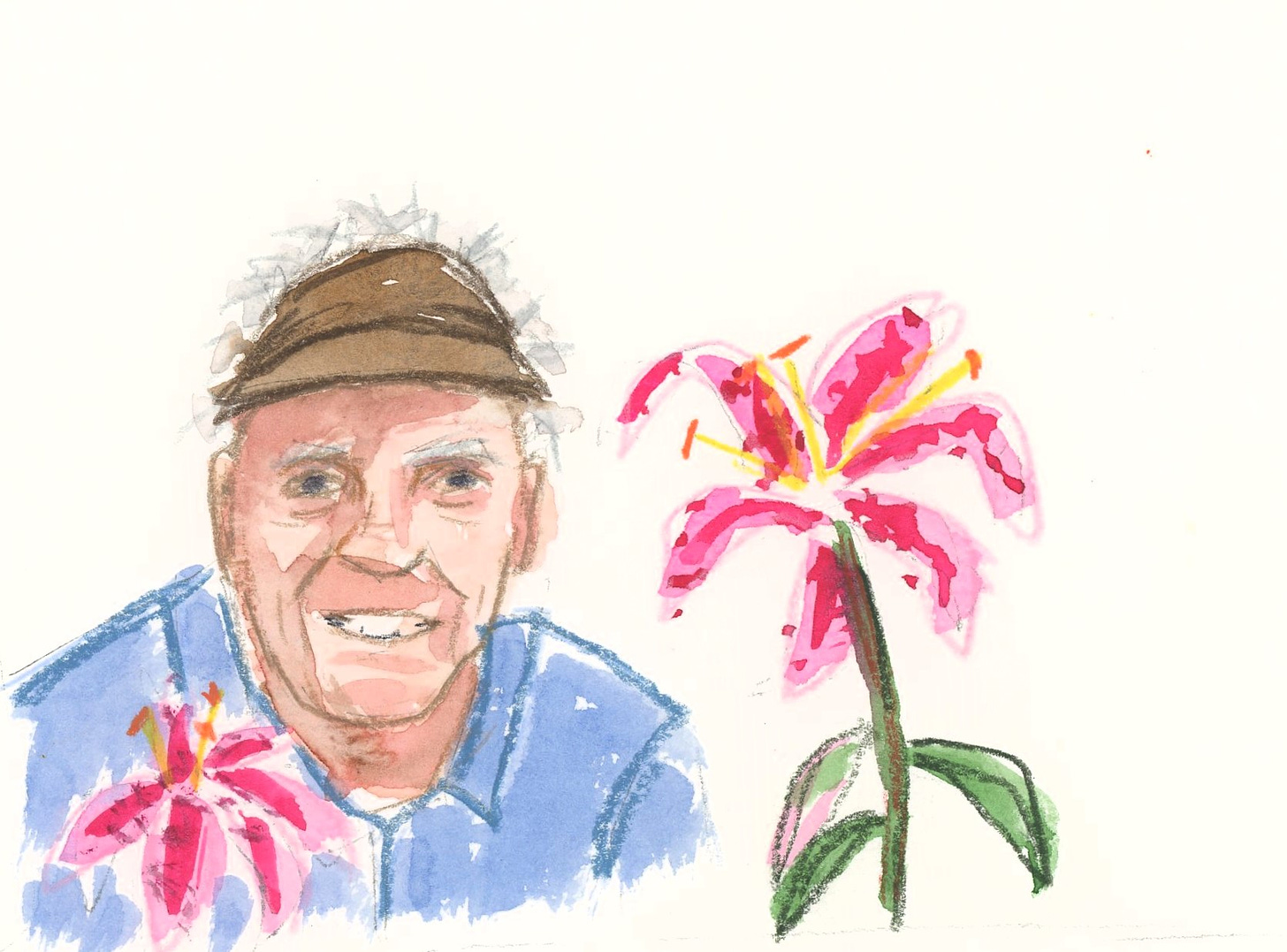
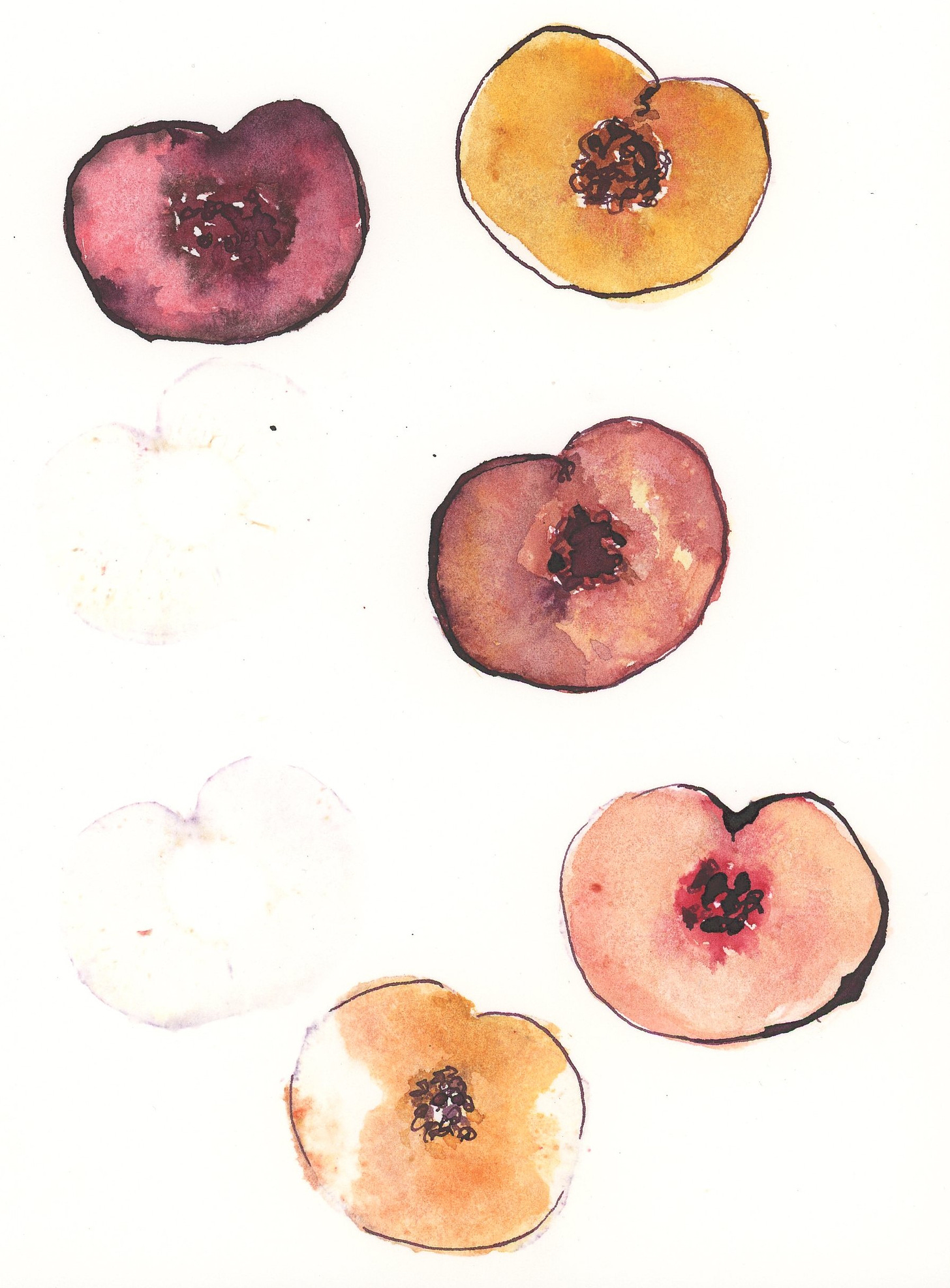
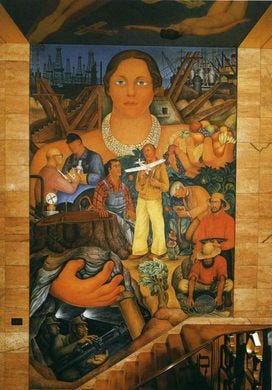
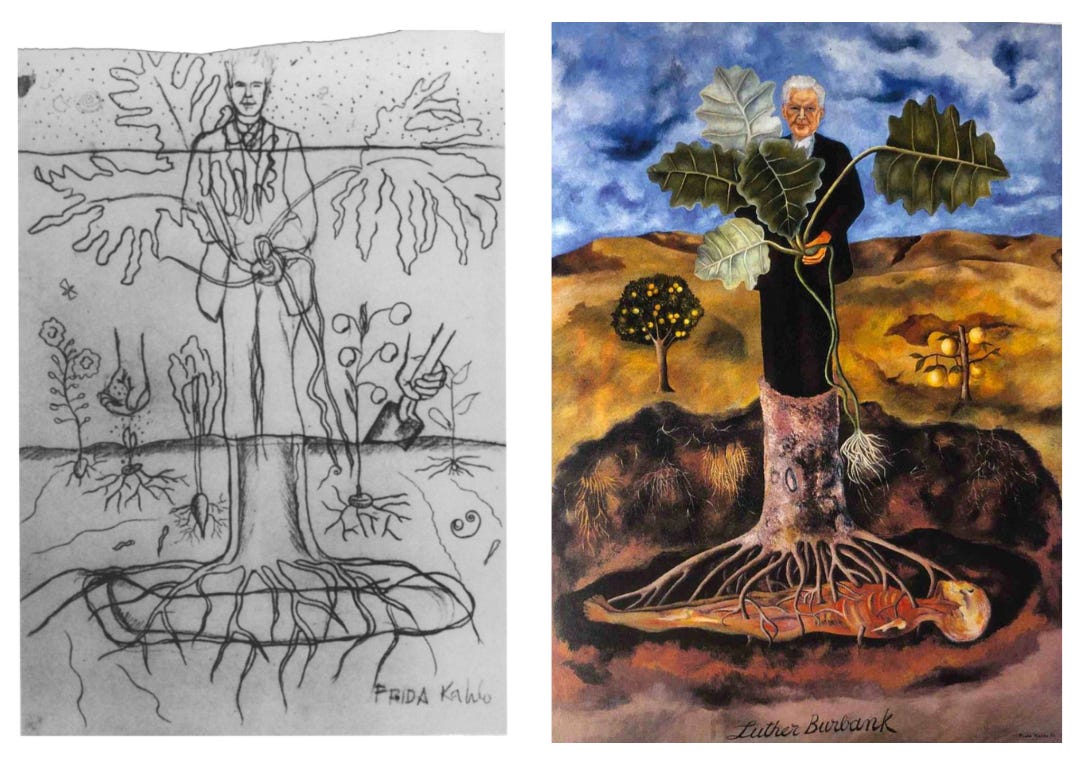

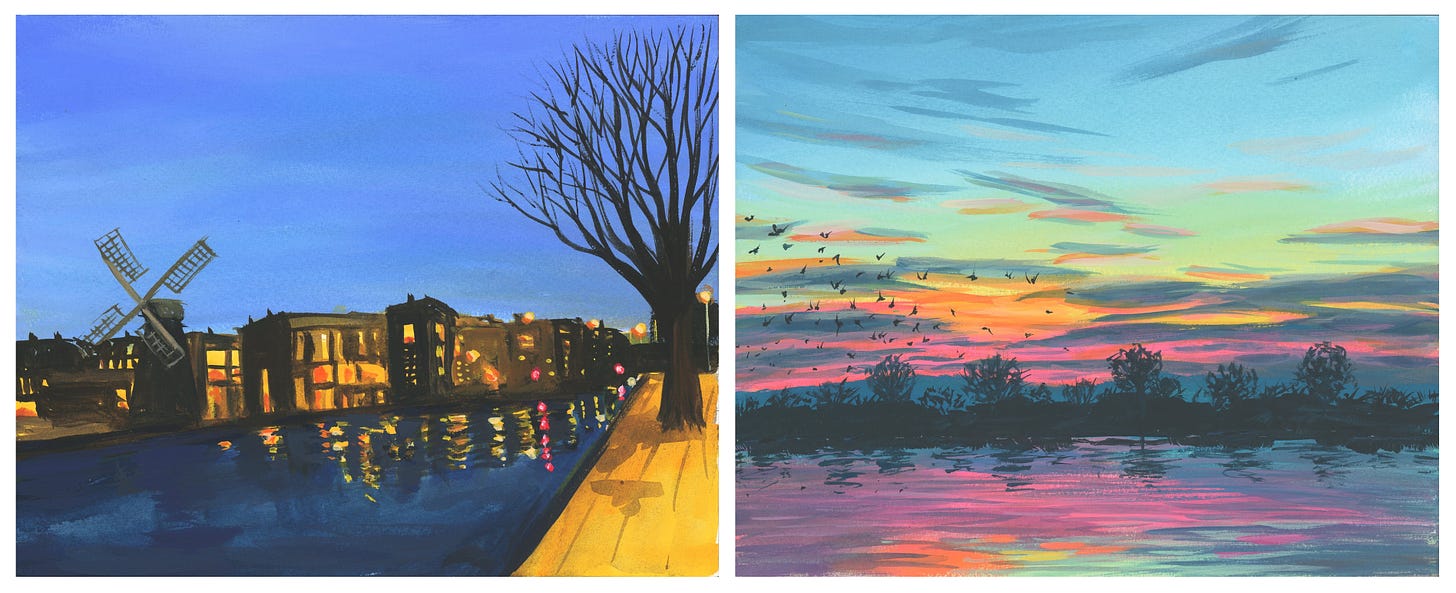
I was also taken by the NYT article and made the plum cake with a bag of plums from a neighbor, but my plums did not stay on the top. Still, we all enjoyed it, and it traveled well too. I did not think to paint the plums first - next time!
This was not what I was expecting when I opened it up to read---it was so much more! So good and I have a plum torte on my radar for early next week!